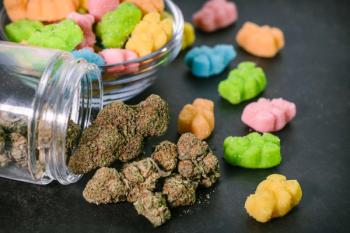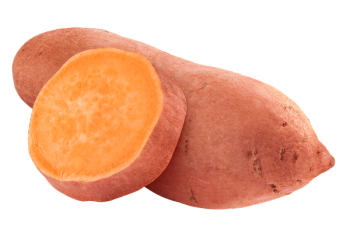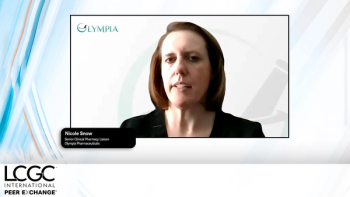
E-Separation Solutions
- E-Separation Solutions-03-18-2009
- Volume 0
- Issue 0
Technology Forum: Environmental
Joining us for this discussion are Richard F. Jack of Dionex and Robert S. Johnson of Horizon Technology, Inc.
With stricter regulations on drinking water and the increased attention paid to acetonitrile usage recently, environmental concerns have become a hot topic in the field of separation science. Traditional methods for environmental monitoring such as GC and GC-MS, along with so-called “green” techniques such as chiral and SFC, are coming to the forefront in the industry more than ever.
Joining us for this discussion are Richard F. Jack of Dionex; Robert S. Johnson of Horizon Technology, Inc.; and Ngoc Nguyen of Phenomenex.
Where do you see the biggest strides being made in the environmental industry recently? GC, GC-MS, GCXGC, LC-MS, Chiral/SFC?
Jack:The biggest strides for environmental analysis are in the dual GC and LC–MS-MS areas. We are also seeing increased interest in other MS technologies, such as TOF, Q-TOF, and Ion Trap. The triple quads are popular due to their ability to quantify known contaminants. The recent interest in the emerging contaminants (ECs), also called compounds ofemerging concern (CECs), such as pharmaceuticals and personal care products as well as pesticides has led to a need for greater understanding of which contaminants are actually present. For unregulated contaminants, research efforts that focus on environmental screening rely on MS detectors better suited to searching unknowns, suchas TOF and Ion Trap-based MS detectors.
Johnson: From my company’s perspective, and in regards to sample preparation, one of the biggest growth areas is the ability to be able to handle large volumes of "whole" water samples - up to 8 liters - for the analysis of trace quantities of contaminants, such as pharmaceutical byproducts in drinking water. For these types of compounds, LC–MS is the analytical detection method of choice.
Nguyen: Environmental testing has become much more demanding: faster analysis, more sensitivity, all while resolving a wider range of compounds. In response, system and column manufacturers are looking to develop new technologies that give chromatographers specialized solutions.
Have you noticed a trend toward environmental friendliness at shows that you attend? For instance, Pittcon just had a "Green Corner" for environmentally friendly exhibitors/products.
Jack:Yes, green has become a popular buzzword and its overuse may behurting the movement towards real solutions. One outcome of theacetonitrile shortage is the movement towards HPLC methods with lowerflow rates or alternate solvents like methanol that in turn lead to less waste.
Johnson:Yes, absolutely, and we believe this is a global trend. With the increased awareness of substances such as personal care products (PCPs), pharmaceutical byproducts, bisphenyl A, and nonyl phenol in the world’s drinking water supplies, more countries are realizing that their water supplies must be tested more frequently to monitor for these new types of contaminants. Many countries are also lowering detection limits, as concern over these contaminants spreads.
Nguyen: In recent years, there has been a rapid, worldwide increase in environmental safety and concerns. This heightened focus can be seen at recent tradeshows, from products premiered to give-away items. At the recent Pittcon show in Chicago, we saw a significant increased interest in SFC, a technique that reduces solvent usage and waste by utilizing CO2 as the mobile phase. In addition, many people were interested in using solvent recyclers to lower their solvent consumption. Another visible way to measure the trend is by looking at the give-away items at shows. Popular give-away items are now trending towards environmentally friendly products, such as reusable tote bags, and note pads from recycled paper. We expect this trend to not only continue, but grow in the future.
What are some easy ways for labs/companies to be environmentally safe/friendly?
Jack:Don't purchase large bulk solvents to save money, use what youbuy. Consider disposal costs in your purchasing decision. Go tomicrobore systems for all analytical methods that use solvents.
Johnson:There are many ways laboratories and companies in general can become more environmentally safe and friendly. Cutting back on consumption of fossil fuels reduces our carbon footprint and protects the environment. Reducing and capturing chemical discharge from labs also protects the environment and has an economical benefit in reducing costs. Seeking out alternative sample preparation processes, such as solid phase extraction (SPE) over liquid-liquid extraction (LLE), significantly reduces the total volume of organic solvents used in environmental water testing. SPE enables reduced solvent use and recovery of vapors when evaporating and concentrating solvents. These are just two of the many benefits of the environmentally safe and friendly products my company provides to contribute to environmental protection.
Nguyen: There are several easy things labs/companies can to do to be more environmentally safe/friendly. First and foremost, labs can purchase a solvent recycler. There are many solvent conservation systems available designed to recycle uncontaminated solvents used in isocratic HPLC processes. In most systems, a high percentage of the mobile phase can be recycled and re-used, which not only saves money but helps the environment by reducing solvent consumption. Secondly, if a lab/company is still utilizing liquid-liquid extractions as their sample preparation technique, they can convert over to a solid phase extraction (SPE) method. In addition to saving solvent, this technique also provides higher, more reproducible extractions and clean-up.
What do you see for the future of environmental analysis?
Jack:I see increased concern, but we should be willing to not detract from our efforts for a cleaner environment. For example, the argument against a particular regulation always mentions the cost increase for a cleaner solution. What is left out of the discussion is the toxic cost, such as unregulated contaminant destruction of wildlife, contaminated aquifers, and lower life expectancy in general.
Johnson:With the continuing need to monitor for more low-level contaminants in the world’s water supplies, we see the need as twofold. 1) The development of ecofriendly and economical analytical instruments that can detect lower levels of contaminants. 2) The ability to be able to extract larger sample volumes from a wide range of clean and particulate-laden water samples so lower detection levels can be achieved more easily.
Nguyen: I expect future environmental analysis will keep pushing the limits: faster analysis with more sensitivity and better selectivity. As we continue to uncover new compounds that can negatively impact us and our environment, even at extremely low levels, we will need to have a solution that is able to adequately detect these analytes with ultra-high sensitivity.
Articles in this issue
over 16 years ago
Solid-Phase Microextraction (SPME) in the Fish Oil IndustryNewsletter
Join the global community of analytical scientists who trust LCGC for insights on the latest techniques, trends, and expert solutions in chromatography.





